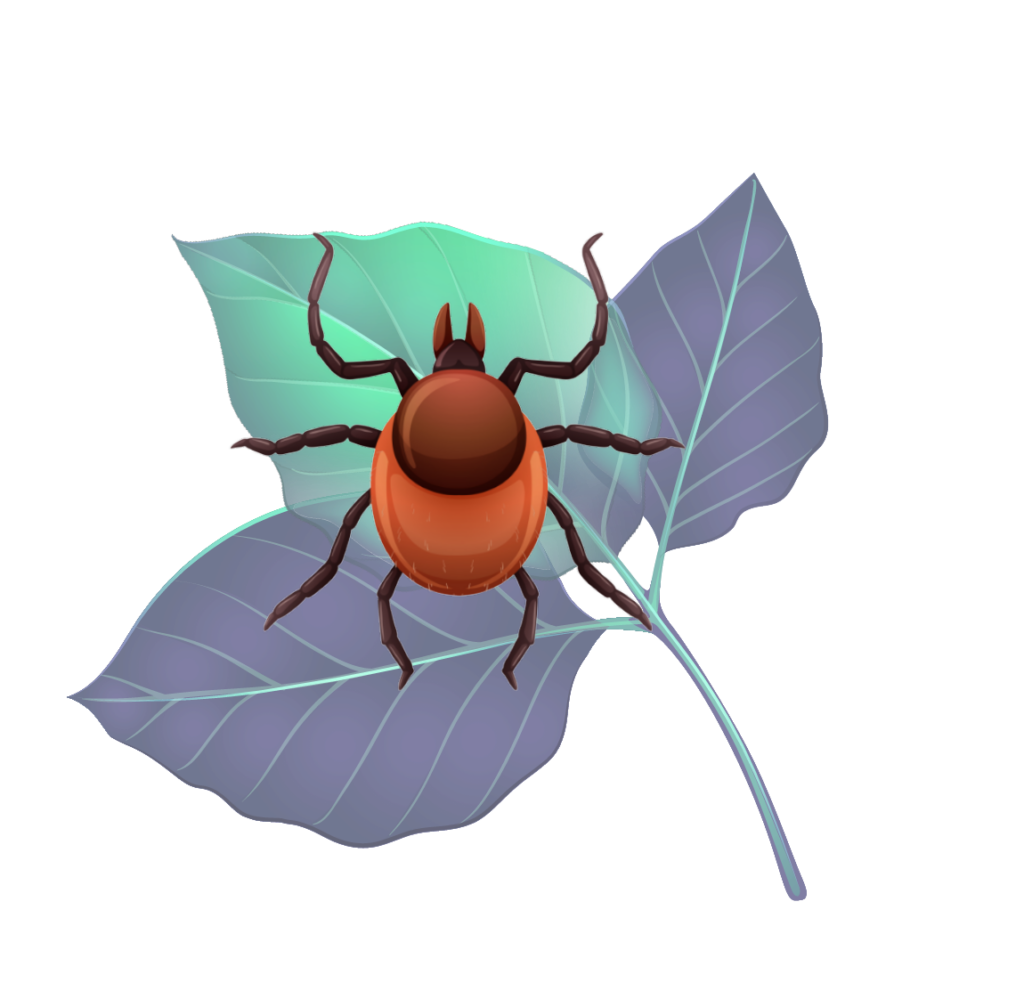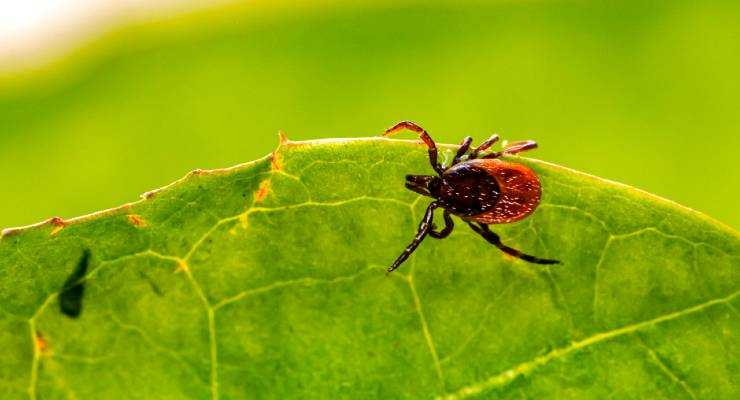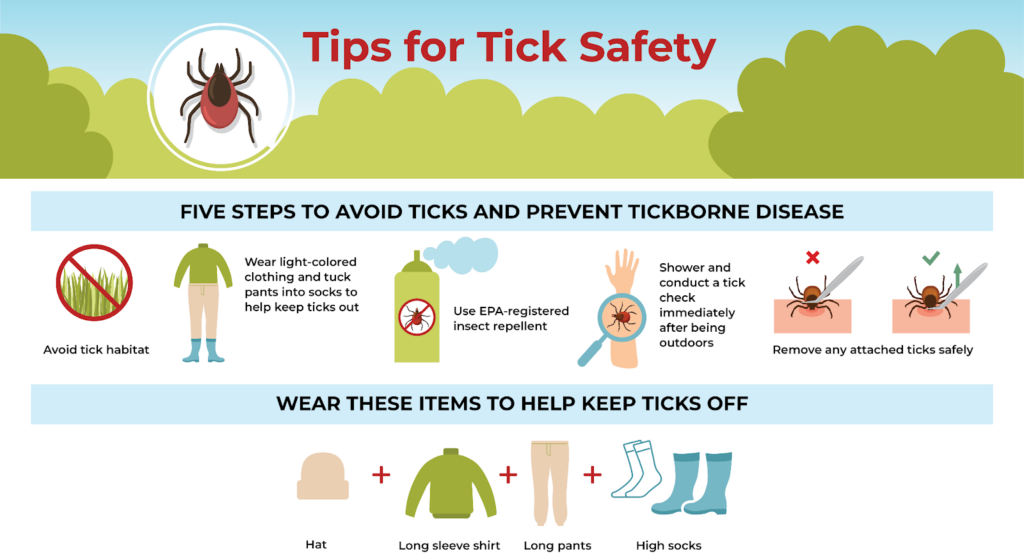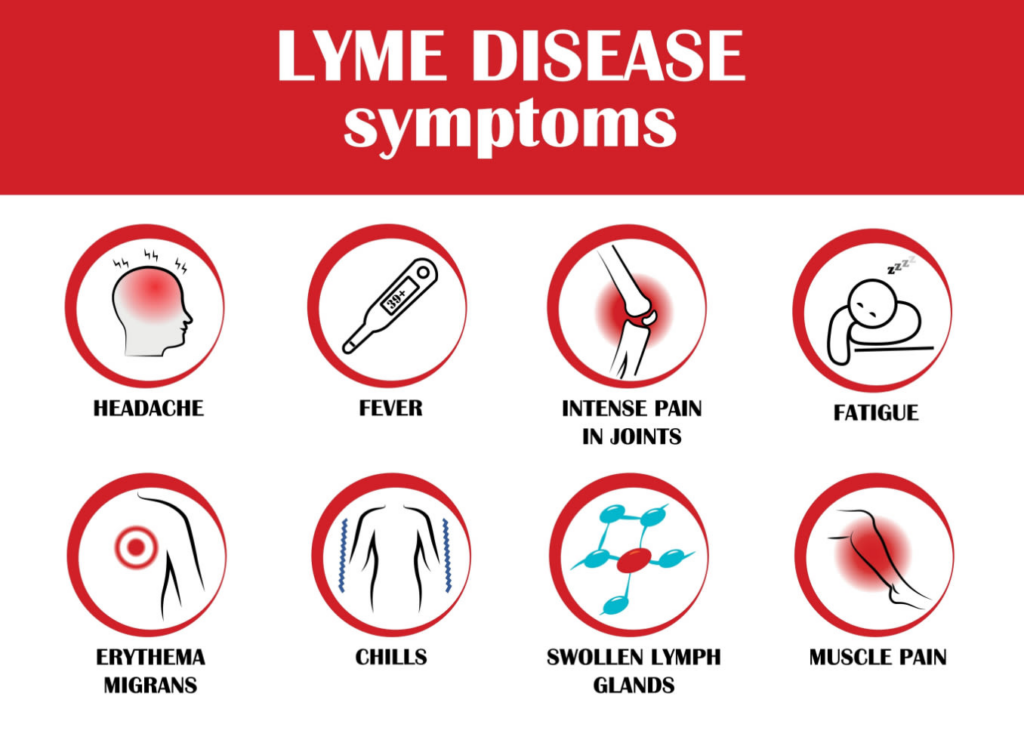Tick-Bite Prevention
Top Tips and Tools


Protecting yourself against tick bites significantly reduces the incidence of Lyme and other tick-borne diseases. You would be safe with the correct knowledge and devices, even in such outdoor activities. Learn how to protect yourself and your family through powerful tick bite prevention strategies and protective gear; know where tick-prone environments abound. Prevention is your best defense!
What are the best ways to avoid tick bites?
The best ways to avoid tick bites include wearing long-sleeved clothing and using EPA-approved repellents containing DEET or picaridin on your skin and clothing. Avoid walking through tall grass, bushes, or wooded areas where ticks thrive.
Create a tick-safe yard by cutting back vegetation and using wood chips as barriers. Showering immediately after spending time outdoors helps wash away unattached ticks. Check your body, clothing, and pets carefully for ticks. Be sure to look in areas such as the armpits, behind the ears, and knees. These simple yet crucial steps provide strong protection against tick-borne illnesses.
What tools can help prevent Lyme disease from tick bites?
Effective tools to prevent Lyme disease include tick-repellent sprays, permethrin-treated clothing, and tick-removal devices. Using these tools reduces exposure to tick bites and minimizes the risk of Lyme disease transmission.
Tools like small tweezers or special tick hooks help pull ticks off safely without leaving pieces in your skin. You can also wear special socks or leg covers for more safety. You can make your yard safer by using sprays that kill ticks.
After spending time outdoors, use sticky rollers (such as those used to pick up pet hair) to catch ticks on your clothes. These tools don’t just stop tick bites-they help keep you from getting sick from ticks. They work like a shield to protect you from ticks if you keep using these things.

How can you make your yard tick-safe?
To make your yard tick-safe, remove leaf litter, trim overgrown grass, and place a wood chip barrier between your yard and wooded areas to deter tick movement. Use tick control products like sprays or granules to reduce tick populations.
Remove piles of firewood or debris that serve as tick habitats. Apply tick control treatments like sprays or granules to kill ticks in high-risk areas. Deer fencing can limit wildlife that may carry ticks into your yard. Encourage sunlit areas by trimming trees, as ticks thrive in moist, shaded environments. Regular maintenance ensures your yard remains tick-free and safe for outdoor activities.
What clothing helps in preventing tick bites?
Clothing that helps prevent tick bites includes long-sleeved shirts, long pants, and socks. Choose light-colored fabrics and treat them with permethrin for extra protection.
For added protection, tuck your pants into socks and shirts into pants to block tick entry points. Consider wearing clothing with built-in insect-repellent technology when hiking or camping.
These simple measures ensure your outfit becomes a barrier against ticks and reduces the chances of tick-borne disease transmission.
Why is early tick removal important?
Early tick removal is crucial because it reduces the risk of Lyme disease transmission. Ticks need to attach for 24-48 hours to transmit Lyme bacteria, so prompt removal is essential for safety.
Grasp the tick with fine-tipped tweezers close to your skin and pull upward with steady, gentle force. Do not squeeze the tick to avoid infection. Clean the bite area with soap and water or an antiseptic.
Early removal prevents the bacteria from transferring, which minimizes health risks. Always look at the site of the bite for signs of infection or rash, and seek medical advice when symptoms arise. Quick action is a simple yet life-saving step in protecting your health.

What are the symptoms of a tick bite infection?
The symptoms of a tick bite infection include redness, swelling, or a rash at the bite site. Fever, fatigue, muscle aches, and joint pain may also develop, indicating potential Lyme disease or another infection.
Other symptoms include fever, chills, headaches, muscle aches, and fatigue. Joint pain, heart issues, or neurological symptoms may occur if untreated. Early recognition of these signs is critical for timely treatment.
Consult a doctor if you notice persistent symptoms or worsening conditions. Prompt medical attention helps ensure a proper diagnosis and prevents complications.
How can pets be protected from ticks?
Pets can be protected from ticks by putting on special tick-fighting collars, getting medicine applied to their skin, or taking pills. Regularly checking their fur and using a brush helps locate ticks before they do their damage.
Avoid areas where ticks are common with your pets. Check your pet daily, focusing on their ears, neck, and feet, especially after they have played outside.
Use a special comb to check their fur and remove any ticks you find. Keep pets out of tall grass and woods where ticks live. Wash their beds often and spray safe tick sprays around your home. These steps aid in avoiding tick bites on your pets and protect them from illness.
The Key Takeaway
Follow these easy steps for tick bite prevention and end up becoming healthy. Whenever you use the right gear and keep your yard away from ticks, then there is a great chance of having good health because the quick finding of ticks and preparation with the right gear makes you healthy, as well as your family. Keep watch, care for your family and pets, and have fun outside without fear. The best way to stay healthy is to stop ticks before they can bite!
